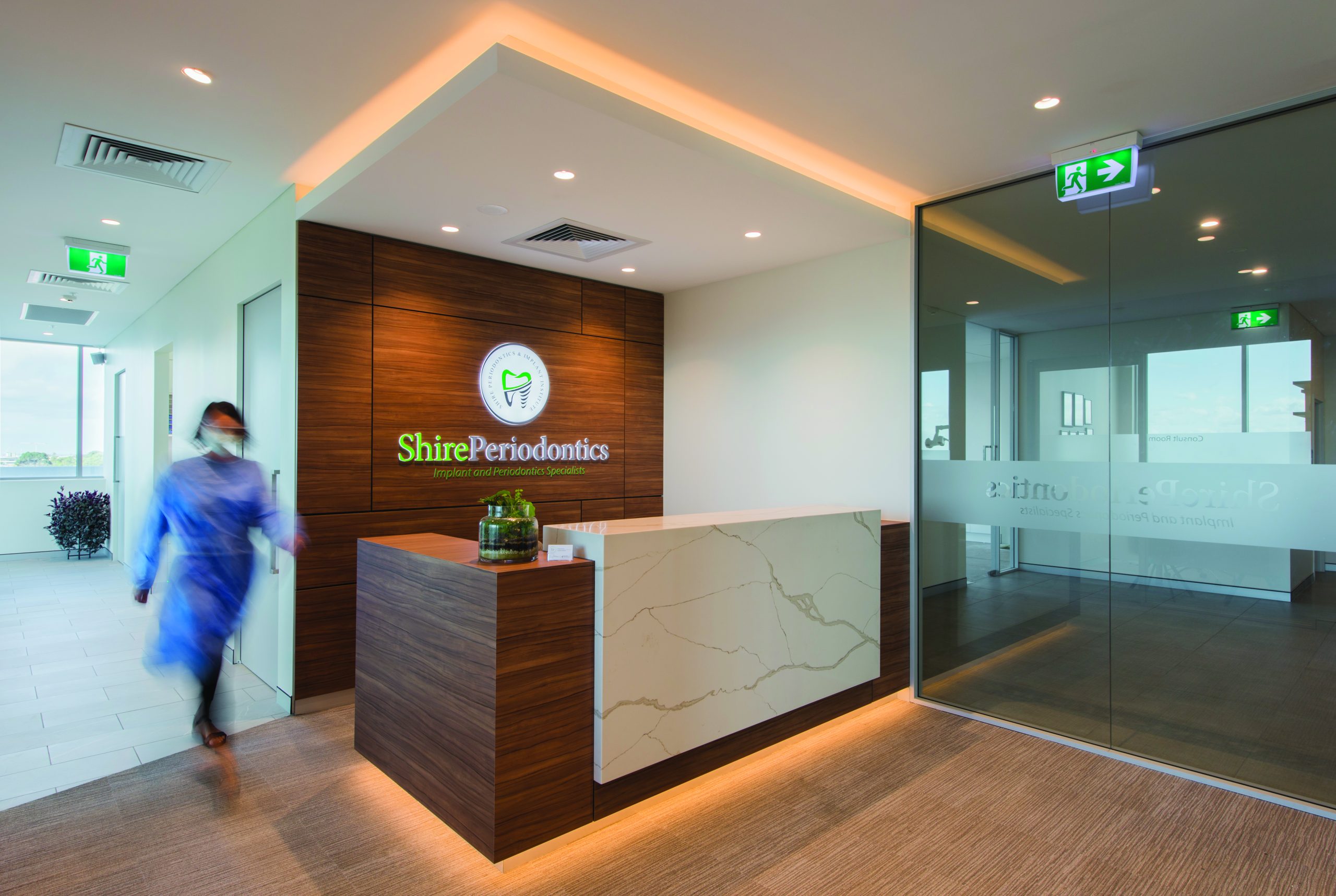Level 5, 531 – 533
The Kingsway, Miranda NSW

Shire Periodontics and Implant Institute, located in Miranda NSW, is a leading clinical Practice specialising in periodontics and dental implants.
We have state-of-the-art facilities and advanced dental technology allowing us to provide the best possible care for our patients. Our team of registered specialist Periodontists offers a range of services, including dental implant surgery and treatment for gum disease.
The Practice takes a multidisciplinary approach to patient care. We collaborate with prosthodontists, orthodontists, paediatric dental specialists, and general dentists to ensure holistic treatment plans.
This collaborative environment not only enhances patient outcomes but also serves as a platform for knowledge exchange, research, and scientific teaching presentations for dental professionals. Dr. Nima Kianoush, a Specialist Periodontist and the founder of Shire Periodontics, along with Dr. Max Fertman, regularly give presentations to other dental professionals.
At Shire Periodontics and Implant Institute we offer a comprehensive solution for patients with extensive tooth loss. Utilising advanced technology and techniques, we provide durable, aesthetically pleasing full-arch restorations that restore both function and confidence.
At Shire Periodontics and Implant Institute, we offer gum grafts to address gum recession and improve the health and appearance of your gums. Our experienced specialists use advanced techniques to ensure effective and comfortable treatment, restoring your smile with natural-looking results.
The Practice also features a conference room for after-hours lectures, seminars, and workshops, further contributing to the professional development of dental practitioners. With a focus on patient comfort and advanced clinical services, Shire Periodontics and Implant Institute aims to provide exceptional oral rehabilitation and dental implant treatments in a welcoming and supportive environment.